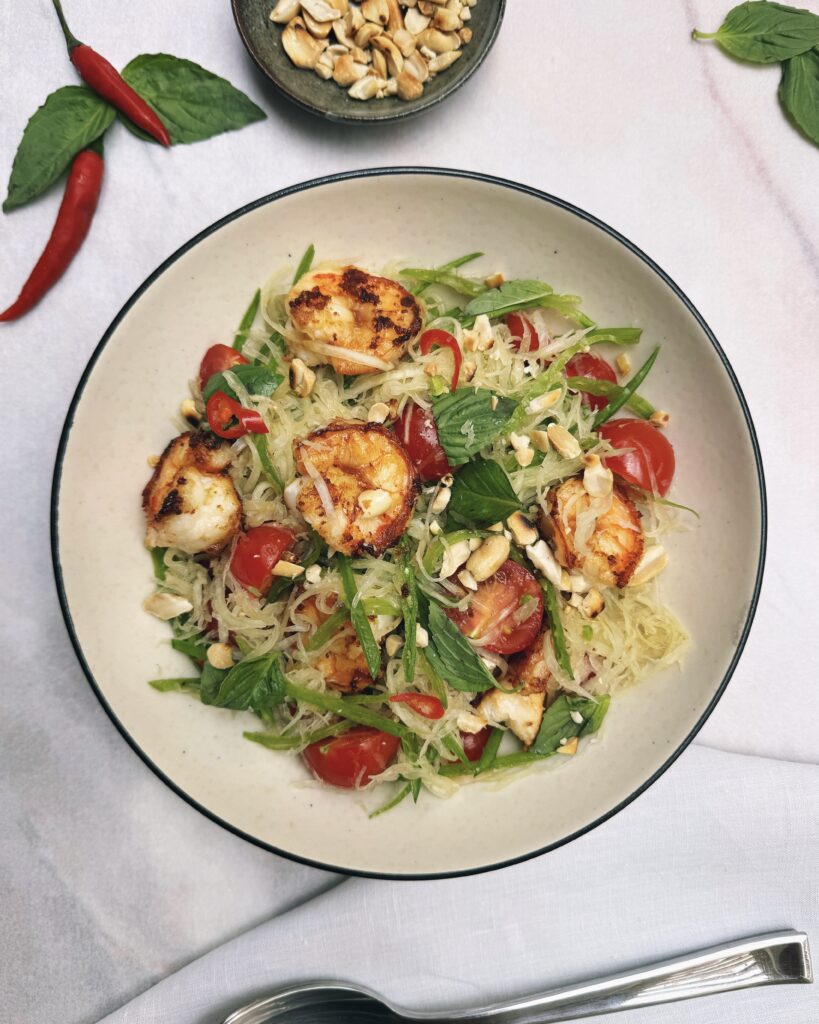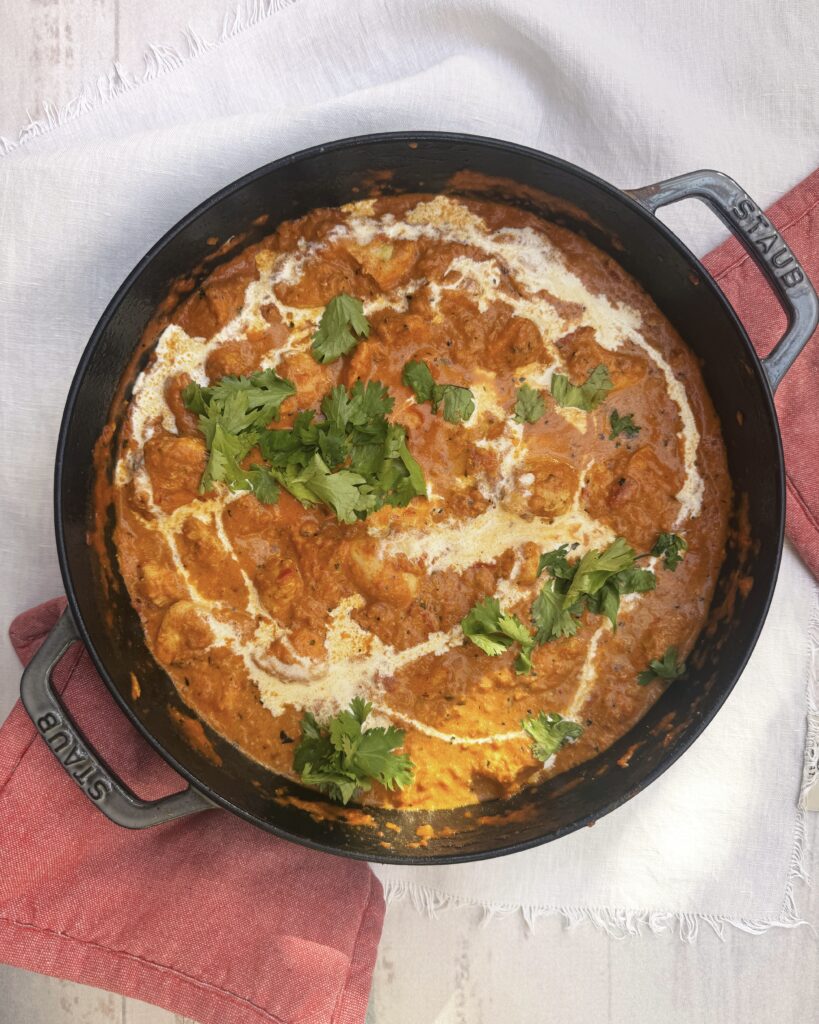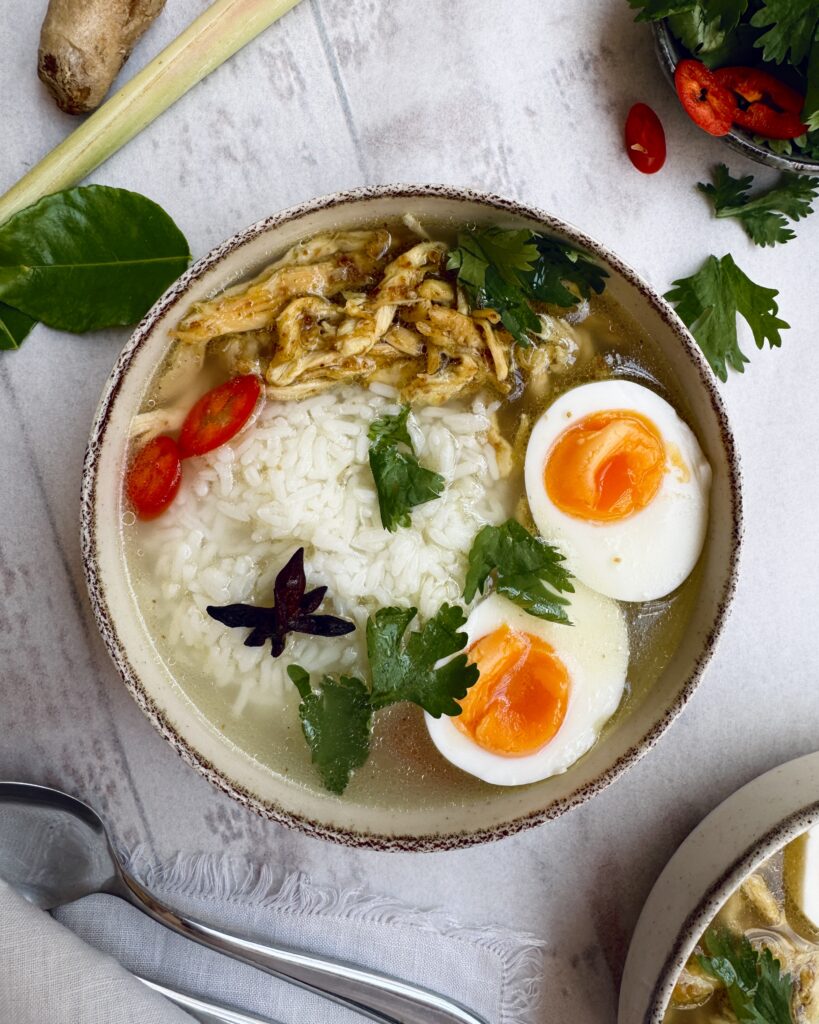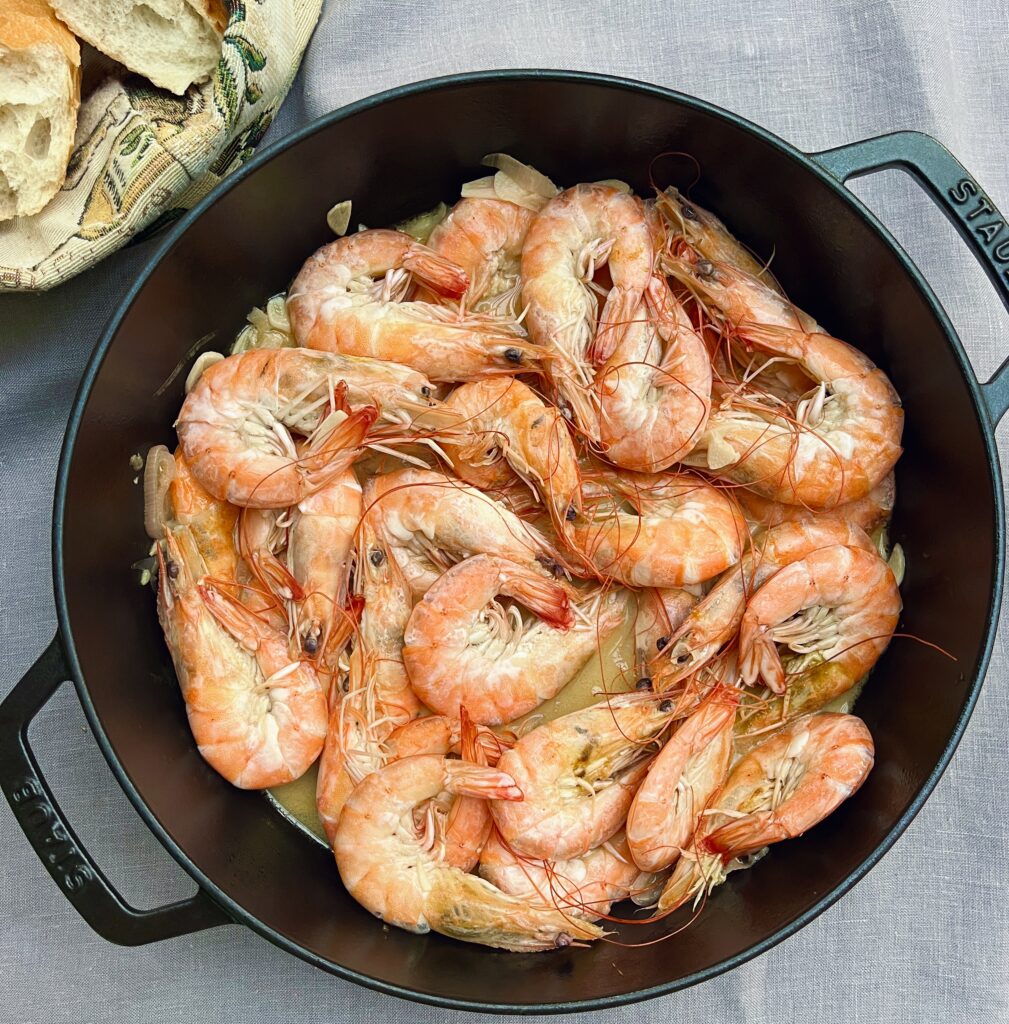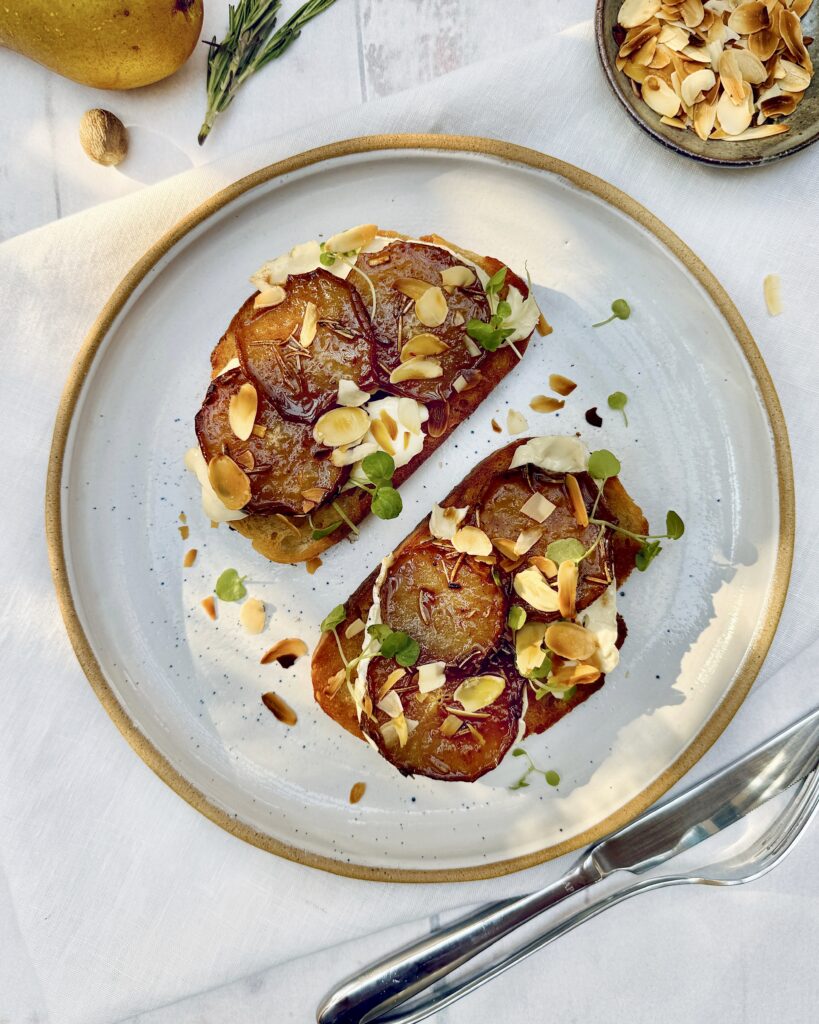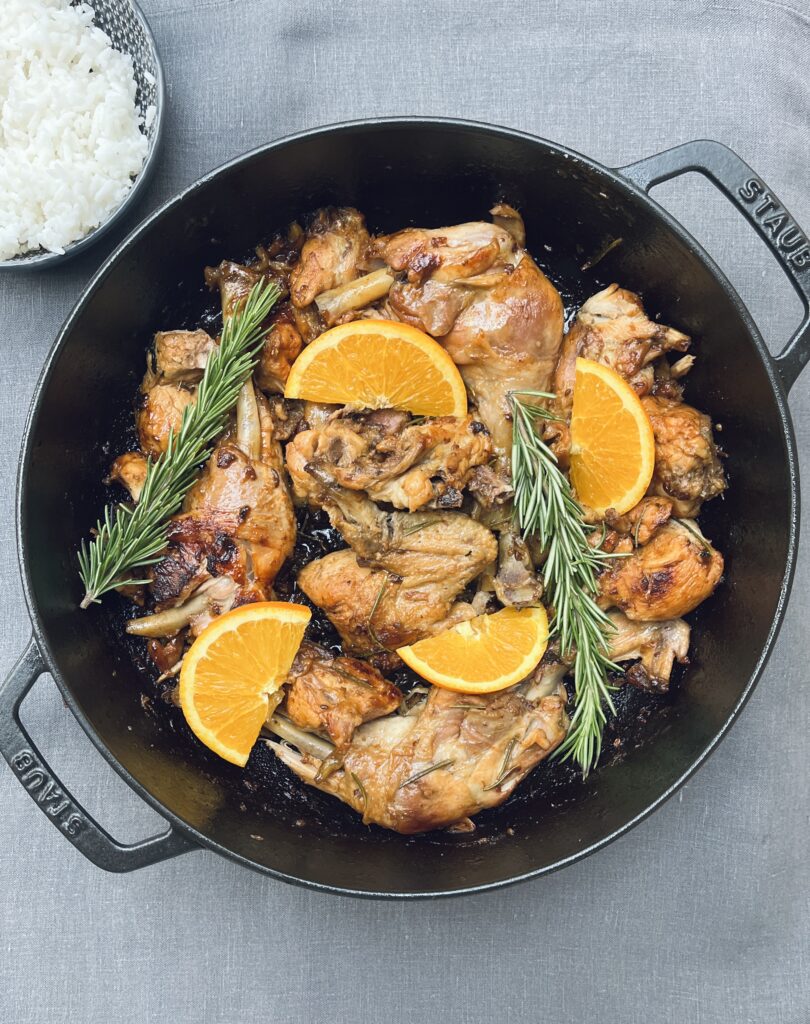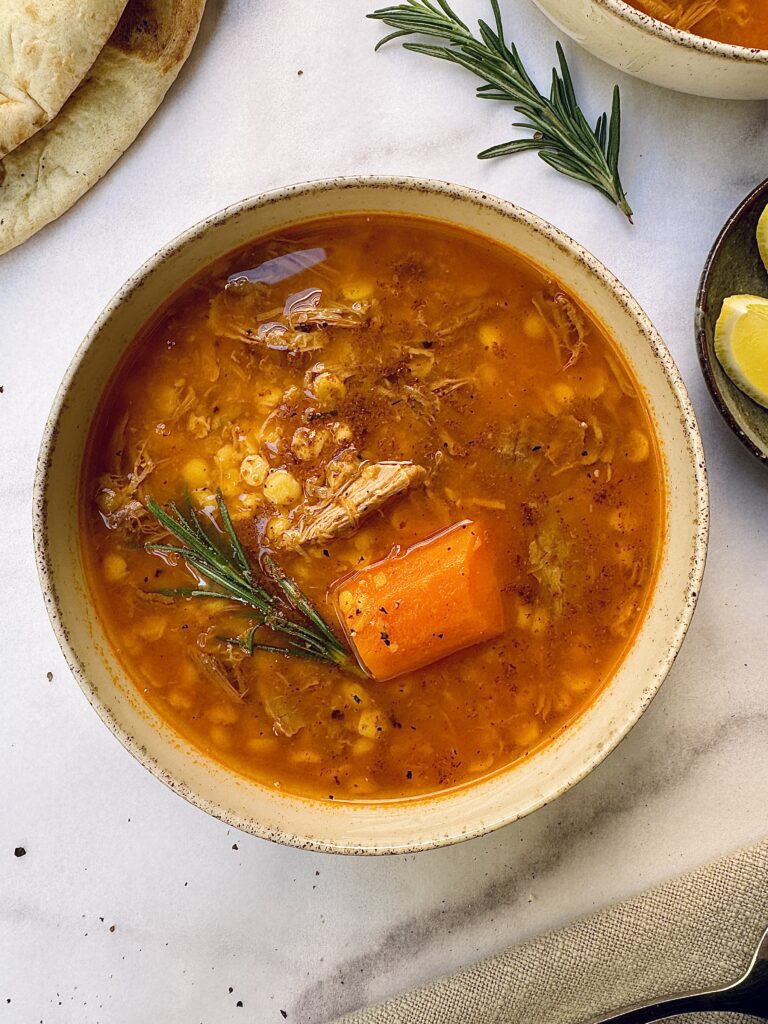Oh Sri Lankan Vegetable Curries! Delicate, fragrant and incredibly flavourful stews with vegetables gently simmering in a rich coconut gravy with aromatics and spices. I first discovered them a few years ago and it was love from the first bite.
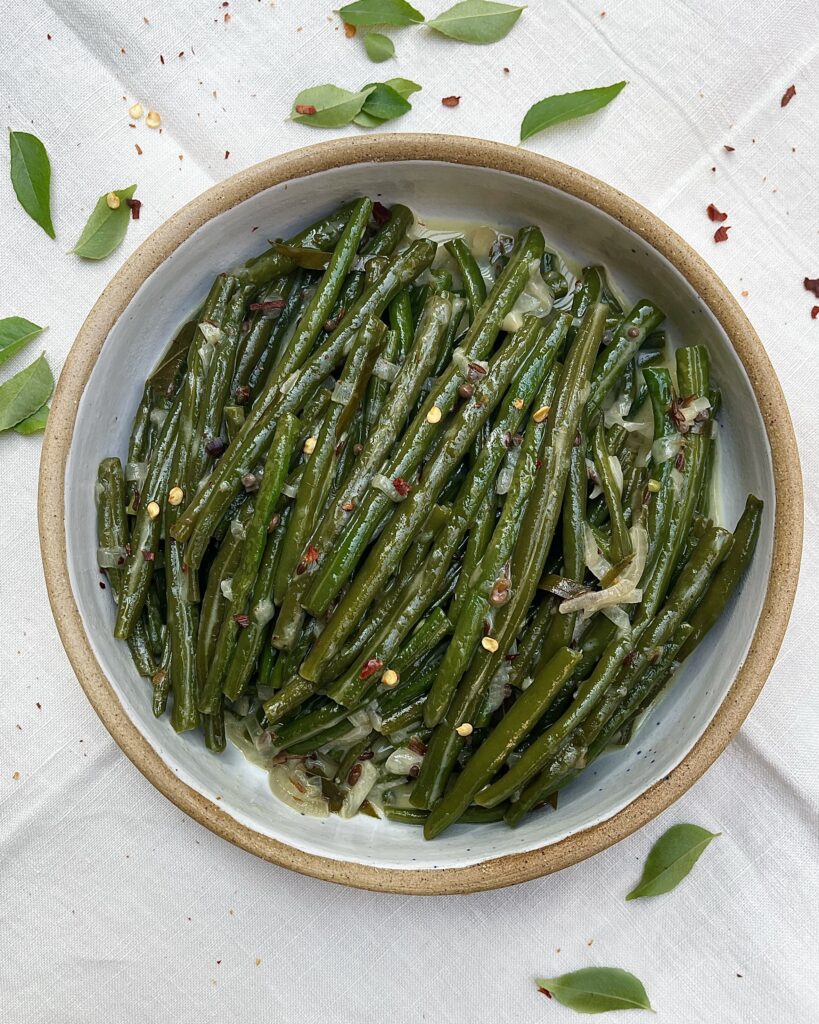
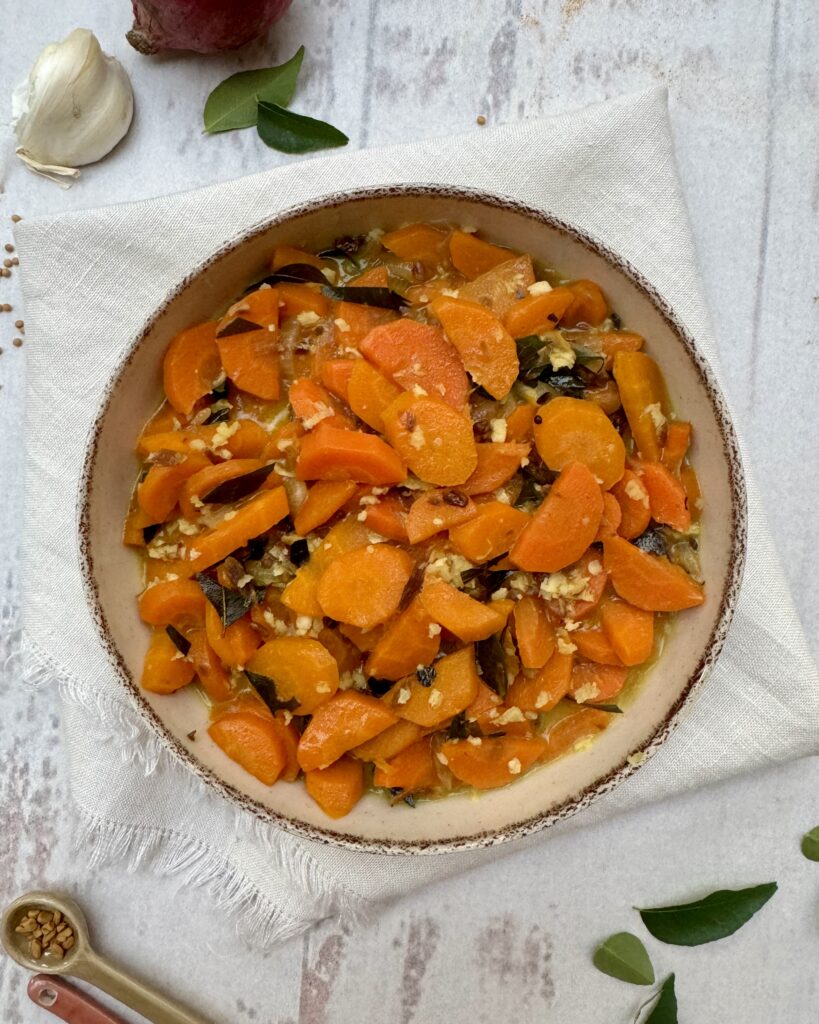
At the time, we had a lady from Sri Lanka helping around the house, and she turned out to be a fabulous cook. She wasn’t too fond of our menu and preferred to make her own meals. Whenever she was in the kitchen, the aromas of her cooking blew me away. I was in a complete awe by how a pinch of spices and a bunch of aromatics transformed humble vegetables into something so different and insanely good!!
I could not believe how I’d lived for so long without that knowledge. In fact, this is where my affection for spices was born and has been growing since.
With this post, I want to spread the word and share a comprehensive guide on how to make those delicious curries at home. Because we all need them in our lives!!
Sri Lankan Vegetable Curries At a Glance:
These quick stews are staples of Sri Lankan cuisine that largely relies on vegetables and spices. The process starts by briefly tempering whole spices and aromatics in oil. Then powdered spices and chilies go in, followed by chopped vegetables and coconut milk. The curry slowly bubbles over low heat until the veggies soften and is then left to rest for 10-15 minutes. During the resting phase the gravy thickens and the flavours blend in further.
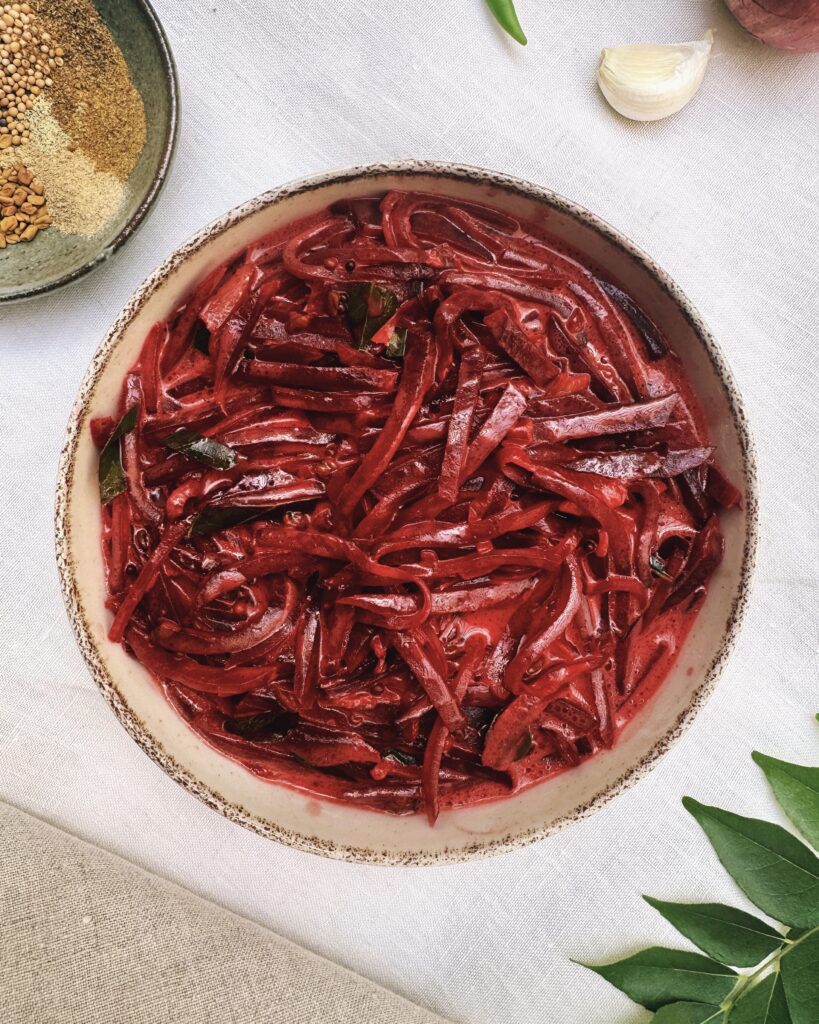
While the aromatics largely remain the same: onions, garlic, curry leaves and chilies – the combination of spices may vary slightly based on the flavour profile of the vegetable. In the following sections I will describe both common ingredients and possible variations.
Typical Ingredients:
1. Vegetables
These curries are most commonly made with one type of vegetable that can vary. I have tried and can wholeheartedly recommend carrot, beetroot and turnip, pumpkin and cauliflower, green beans or even spinach.
2. Aromatics
The backbone of Sri Lankan vegetable curries is the trio of onion, garlic and curry leaves. Thinly sliced and gently tempered in oil, they develop deep, ‘meaty’ flavours and create a savory, fragrant base.
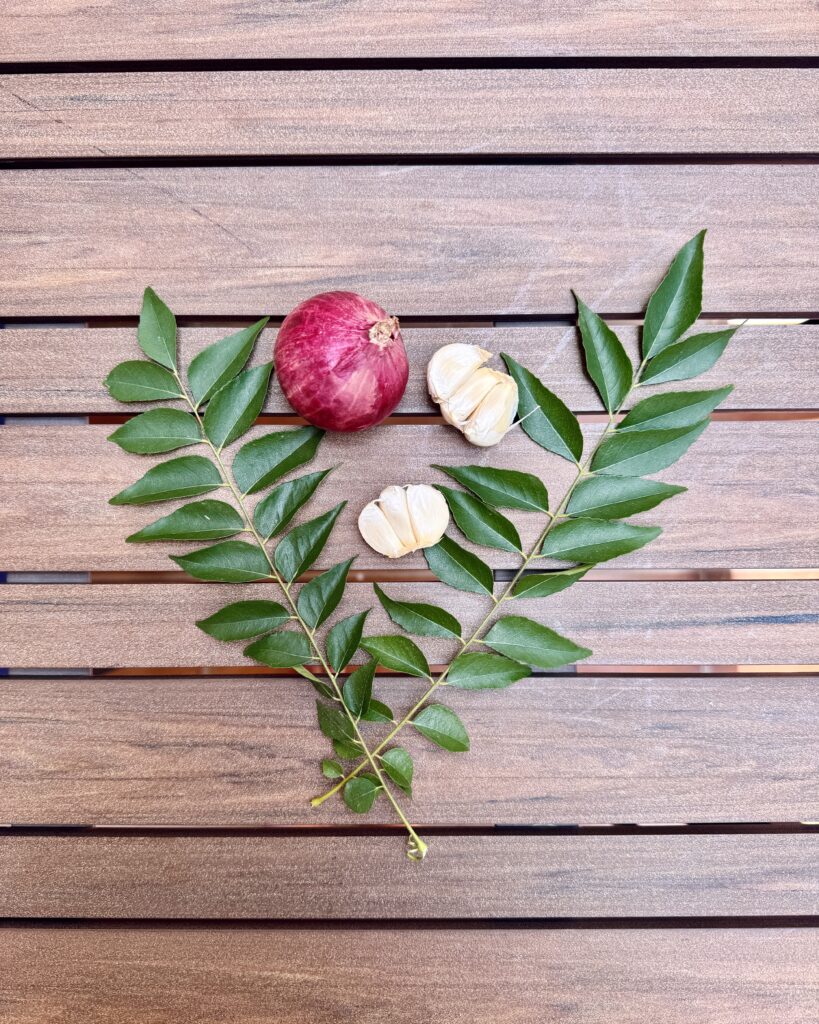
- Onions: most commonly, the curries are made with red onions or shallots. One small onion or half of a larger one, thinly sliced into half circles, is plenty.
- Garlic: 2-3 cloves of garlic are cut lengthwise and finely sliced.
- Curry leaves: an essential ingredient in local cuisine and an absolute must. Their unique flavour (which has nothing to do with curry powder) is hard to substitute with anything else. Nowadays you can find curry leaves in all major supermarkets, otherwise you can order them online. Please don’t skip them! You can read my Curry Leaves Spice Profile to find out more about this amazing spice.
Lastly, no authentic Sri Lankan curry goes without liberal quantities of green chilies. I usually buy a pack and keep them in the freezer. Being a bit of a wuss when it comes to heat, I only use one chili which I also deseed.
3. Spices
Contrary to what some recipes state, you don’t need an extensive set of spices to get an authentic culinary experience. In fact, you can get away with as few as three: yellow mustard seeds, fenugreek seeds and turmeric powder. (Well, plus salt!). Together, they add a lot of extra flavour to the savory base which is what makes the curry so special.
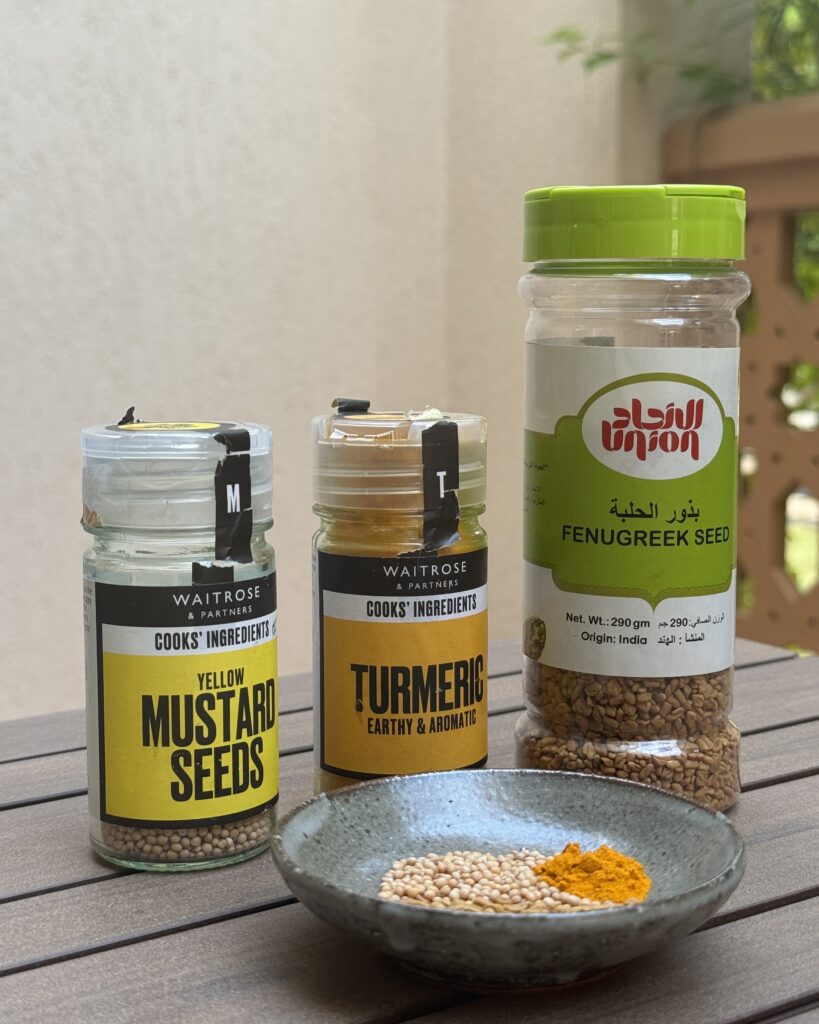
Yellow mustard seeds create warm, pungent notes with subtle sour undertones.
Fenugreek seeds have a very unique flavour that may need some getting used to. It is a mix between sweet, caramel-like and slightly bitter, almost musty taste. They also act as a thickening agent in sauces and gravies thanks to their texture.
Turmeric powder is distinctively bitter and earthy, and a little pinch goes a long way. It is a very traditional ingredient in local cuisine primarily thanks to its healing properties.
As for the salt, half a teaspoon of simple table salt is all we need here.
4. Coconut Milk
Although our helper always preferred to use Maggi coconut powder mixed with water, I usually go for a can or a carton of coconut milk. It brings in the sweet element that balances the savory aspects of the dish.
And that’s about it for the basics! You just need some cooking oil for tempering, which can also be coconut oil.
That said, there is nothing wrong in enhancing the flavours further with an array of additional ingredients!
Optional Ingredients for Sri Lankan Vegetable Curries:
The most curious ingredient that I was introduced to during our curry making sessions was Maldivian dry fish chips. Now, if you ask my helper, that wasn’t optional but an absolute must! Maldivian dry fish is Sri Lankan response to Far East Asia’s shrimp paste or fish sauce, and the purpose it to bring in deep flavours of umami. Furthermore, those dry fish flakes (as they also call them) help thicken the sauce further.
Then there is a bunch of extra spices that you can pop into your curries, including:
- Cumin seeds: pungent and earthy, they are great with vegetables such as beetroot, turnip, green beans and cauliflower.
- Ground cardamom is an excellent addition to carrot and pumpkin curries.
- Ground coriander and white pepper: feel free to add a pinch (about 1/2 tsp) to any type of curry.
- Red chili flakes: work well with green beans and cauliflower.
Finally, some vegetables benefit from pairing with coconut more than others, and that’s when shaved coconut comes in very handy! I particularly like it in carrot, beetroot and pumpkin versions.
Flavour Affairs:
For ease of reference, in this section I have outlined possible variations of spices for different types of vegetables. You can use these suggestions as a guide or experiment and build up your own delicious combos! A couple of notes:
- Onions, garlic and curry leaves are a must and go by OGCL abbreviation;
- “Mustard seeds” refer to yellow mustard seeds;
- Maldivian dry fish flakes are not mentioned but you should feel free to add them to any of those curries.
Carrots + OGCL + Mustards Seeds + Fenugreek Seeds + Green Cardamom + Turmeric + Green Chili + Shaved Coconut
Green Beans + OGCL + Mustard Seeds + Cumin Seeds + Turmeric + Ground Coriander + White Pepper + Red Chili Flakes
Beetroot + OGCL + Mustard Seeds + Black Mustard Seeds + Fenugreek Seeds + Ground Cardamom + Ground Cumin + Ground Coriander + Green Chilies + Shaved Coconut
Cauliflower + OGCL + Mustards Seeds + Black Mustard Seeds + Cumin Seeds + Ground Coriander + Turmeric + Green Chilies
Pumpkin + OCGL + Mustard Seeds + Fenugreek Seeds + Green Cardamom + Nutmeg + Green Chilies + Shaved Coconut
Turnip + OCGL + Mustard Seeds + Fenugreek Seeds + Cumin Seeds + Caraway Seeds + Ground Coriander + Turmeric + Red Chili Flakes

Typical Quantities:
This overview provides basic measurements for a 4-6 people serving.
- 300g vegetable, sliced or cut
- 2 tbsp cooking oil (vegetable of coconut)
- 1 small red onion thinly sliced
- 2-3 garlic cloves thinly sliced
- 20-25 curry leaves thinly sliced
- 1/2 tsp red chili flakes or 1 whole green chili
- 1 tsp yellow mustard seeds (leveled)
- 1 tsp fenugreek seeds (leveled)
- 1/3 tsp turmeric powder
- 1/2 tsp salt
- 1/2 tsp each additional ground spices
- 270ml coconut milk
- 2 tsp Maldivian dry fish (optional)
Step by Step Preparation Guide for Sri Lankan Vegetable Curries:
I hope by now you are excited to make your very own curry! Don’t worry, you’ve got it – and the guide below will help you though every step of the process.
- Start by prepping the vegetable of your choice. Wash and trim green beans, peel carrots and slice them into thin half circles, wash and break cauliflower florets into bite-sized pieces. If using turnip or beetroot, cut them into thin strips of about 3-4mm in width and 5cm in length. Chop pumpkin into small-ish cubes.
- Prepare and line up spices and aromatics. As you get to the tempering you’ll have to move fast, and it is much easier when everything is ready and at hand. Group the ingredients by their turn in cooking: aromatics, whole spices, ground spices (here shown with dry fish chips and chili flakes which I was also using) and keep them separate.
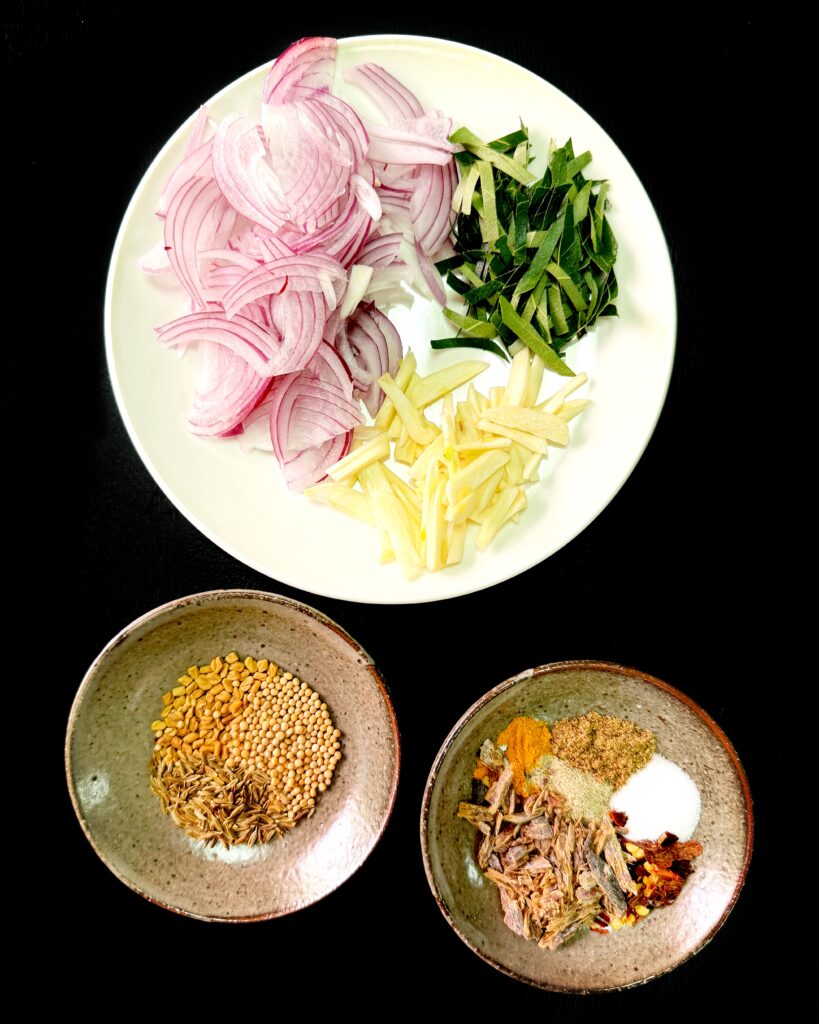
- Heat 2-3 tbsp of cooking oil in a medium-sized pot or sauce pan to medium-high. You can use regular vegetable or coconut oil.
- Add whole spices and fry them for 30-40 seconds until mustard seeds start to pop. Keep a watchful eye – as soon as they do, they’ll be flying all over so you’ll need to act fast! Immediately add garlic, onions and curry leaves to the pan and lower the heat to medium. Stir to combine.

- Fry for 1-1.5 minutes until the aroma develops and onions and garlic start to turn golden.
- Add the ground spices together with Maldivian dry fish, if using, and chilies (either whole green or flakes). Add the vegetables, stir to combine and cook for a minute.
- Pour in the coconut milk and bring to simmer. Cover, lower the heat and cook for 5-10 minutes, depending on the type of vegetable, until it starts to soften but still holds the shape.
- Remove the lid and simmer for another 3-4 minutes. Keep an eye on the vegetables to make sure they don’t overcook and turn mushy.
- Turn the heat off and allow to rest for 5-10 minutes until the gravy thickens.
Done! You can enjoy the curry immediately or at a room temperature, and most of them keep well in the fridge for a couple of days.
Serving Suggestions:
I mostly make these curries when I feel like a light vegetarian meal, so more often than not I enjoy them on their own. However, it is very common to serve a vegetable curry over rice or with naan or paratha. You can also have them as a side dish to meats or especially fish.
I really hope you give them a go! They kind of grow on you, making you appreciate the wonderful blend of flavours more and more each time. It is also an easy, healthy dish that offers a lot of variety as you start to mix and match spices and vegetables.
Below, I am including a recipe card for beetroot curry that sums up the ingredients and process once again. Or you can start with one of my other favourites – Carrot Curry!
.

Sri Lankan Beetroot Coconut Curry
Equipment
- 1 medium sauce pan
Ingredients
- 300 g vegetable sliced or cut
- 2 tbsp cooking oil vegetable of coconut
- 1 small red onion thinly sliced
- 2-3 garlic cloves thinly sliced
- 20-25 curry leaves thinly sliced
- 1/2 tsp red chili flakes or 1 whole green chili
- 1/2 tsp yellow mustard seeds
- 1/2 tsp black mustard seeds
- 1 tsp fenugreek seeds leveled
- 1/2 tsp salt
- 1/2 tsp ground green cardamom
- 1/2 tsp ground cumin
- 1/2 tsp ground coriander
- 270 ml coconut milk
- 2 tsp Maldivian dry fish optional
- 2 tsp shaved coconut optional
Instructions
- Measure and line up all ingredients to have them at hand.
- In a medium sauce pan, heat 2 tbsp of cooking oil to medium.
- Add mustard and fenugreek seeds and temper for 20-40 seconds until mustard seeds just start to pop.
- Add sliced onions, garlic and curry leaves and fry for a minute, until the aroma develops but before garlic starts to brown.
- Add the beetroot and stir to combine.
- Stir in the ground spices: cardamom, cumin, coriander, and salt.
- Pour in the coconut milk, add the fish chips (if using) and pop in the green chili.
- Lower the heat, cover and simmer for 7-10 minutes until the beetroot just softens.
- Remove the lid and keep simmering for another 3-4 minutes.
- Add shaved coconut, if using, turn the heat off and leave to rest for 5-10 minutes for the gravy to thicken.
- Serve warm or at a room temperature.
Notes
- You can keep beetroot curry in the fridge for up to two days.




